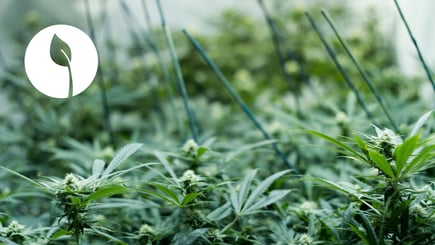
All across the country, the burgeoning cannabis industry is experiencing unprecedented growth. With 29 states embracing the use of medical marijuana, 8 of them permitting its recreational use, and various upcoming campaigns and ballot measures for medical and recreational use in a number of states, marijuana legalization is happening across the US. To support clients growing marijuana, we put together some pro tips for cultivation management.
With the increase in the usage and acceptance of marijuana across the country come more regulations from the government and competition from other businesses. Cannabis businesses must operate under a number of strict guidelines, provisions, and laws that set this industry apart from more typical cultivation operations. On top of that, increasing competition is driving down wholesale cannabis prices, so cannabis business owners must stay on top of their game to keep their operations efficient and cost effective.
Here are a few tips on cultivation management to help you stay compliant and competitive:
Think holistically when setting up your greenhouse facility design
Cultivators can maximize grow space by utilizing both vertical and horizontal space in cultivation areas, having a well-planned layout for all equipment, processes, and functions of the operation, and streamlining workflow to eliminate nonessential tasks. You can do this by analyzing and crunching numbers for each aspect of your operation and investing in the right tools and technology from the start. For example, we've seen operations successfully use sliding benches to minimize aisle space and maximize canopy.
Invest in efficient cannabis growhouse technology
The cannabis industry is one of the nation’s most energy intensive industries, often demanding 24-hour indoor lighting rigs, heating, ventilation and air-conditioning systems. A 5,000-square-foot warehouse filled with hydroponic growing systems can draw five times the electricity of a typical industrial user. In Colorado, growhouse power bills can hit six figures. This can be a huge chunk of the expenses for cultivation operations and also makes them less environment friendly.
Cultivators should conduct an energy audit to spot areas for improvement and consider switching to more eco-friendly light sources like LEDs. Some LED lights can increase a farm’s yield by 30 percent while reducing energy consumption by 45 percent compared to conventional bulbs. This allows growers to maximize their yields while minimizing cost per gram. In addition, advanced environmental controllers maintain the ideal environment, which helps keep quality consistent and maximize yields.
Get the right cultivation management software solution for your operation
The industry is in a position where the right software can facilitate efficiency and effective regulatory oversight to help cultivators manage and grow their operations. However, too often business owners see the upfront high investment cost and opt against a strong technology infrastructure which usually ends up costing them way more later. There are a number of seed-to-sale tracking software solutions in the market today that help growers stay compliant, but with the rapid growth and increasing competition, growers need a comprehensive cultivation management solution that helps them with each aspect of their operation. Flourish was designed keeping the grower's pain points and goals in mind and offers a comprehensive cultivation management software solution that lets cultivators not only stay compliant but also competitive.
Scorecard your suppliers and vendors
Ancillary and supply costs directly affect your cost per gram. It is important to regularly review your suppliers and benchmark costs to stay competitive. You should track common supply chain metrics such as on time delivery and fill rates to scorecard your suppliers. Running out of supplies or paying for express shipping can quickly add up. Also, there are often hidden opportunities to reduce operating costs by better sourcing packaging materials.
Understand your cannabis nutrient mix and adjust them accordingly
Many growers employ commercially produced fertilizer lines that come with ‘feed charts’ prescribing what to use, how much, and when to feed. Following the feed charts is convenient, but it obscures understanding of the plants’ nutritional needs. Each strain requires different nutrients and growing conditions for optimal growth, so the grower needs to observe and take notes to get the right data for his plants to optimize the growing conditions. An educated grower understands the roles of nitrogen, phosphorus, potassium and the various micronutrients required for plant growth, in addition to applying those nutrients in the proper amounts and with the right timing.
Always be prepared for an inspection
Tag your plants, weigh them at each step, keep meticulous records of as many details as you can. A good seed-to-sale tracking software coupled with RFID tags can help you keep track of all necessary information. Keeping all data at one place helps you not only stay compliant but can also offer valuable insights into your business that you can use to stay competitive.
Stay on top of the latest cannabis news
We are still in early stages of the industry and things are always changing and evolving. Reading and learning about the latest trends and technologies can help you stay ahead in the game. It's also very important to stay updated about rules and regulations as they are always changing and new regulations can work for or against your plans. Subscribe to our blog to stay in the know!





